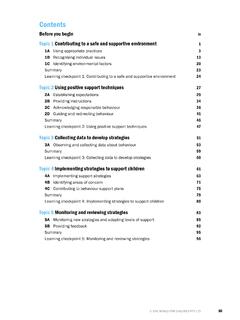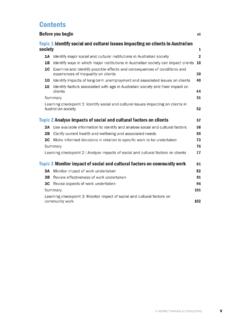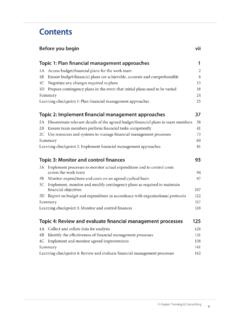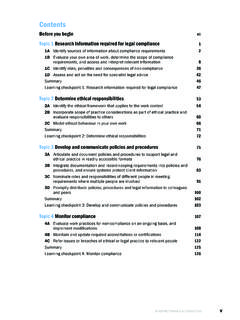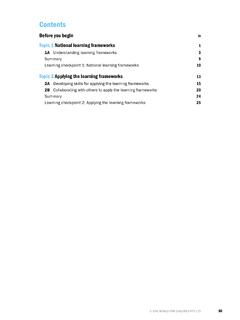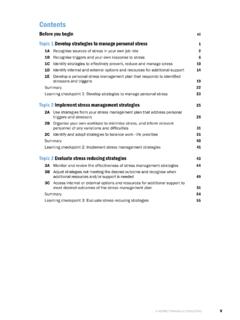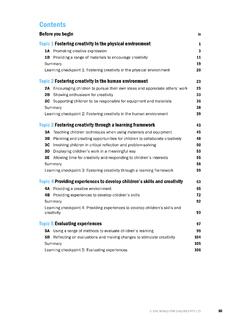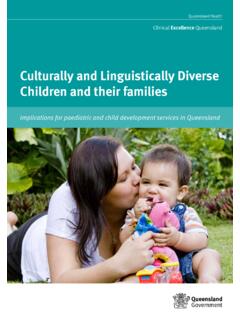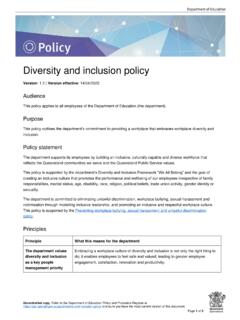Transcription of Contents
1 ASPIRE TRAINING & CONSULTING vContentsBefore you begin viiTopic 1 Determine the appropriate response to case management in accordance with organisational and legislative requirements 11A Develop and utilise case management processes in accordance with statutory requirements 21B Implement appropriate processes to enable the client to set goals and participate in case management processes 101C Integrate appropriate cultural considerations into all aspects of case management planning 161D Provide information on rights of appeal and avenues of complaint so the client understands rights and responsibilities 33 Summary 39 Learning checkpoint 1: Determine the appropriate response to case management in accordance with organisational and legislative requirements 40 Topic 2 Conduct case management meetings 452A Facilitate information sharing with the client and establish an appropriate rapport 462B Identify and agree on client and worker roles, responsibilities, boundaries and processes of service delivery 502C Determine and agree on organisation, family and community needs, responsibilities and rights 53 Summary 56 Learning checkpoint 2.
2 Conduct case management meetings 57 Topic 3 Develop an appropriate case management plan 593A Collaborate with the client to identify strengths, abilities and goals and agree to case management 603B Develop a case management plan to reflect initial assessment of needs 643C Work with the client to identify immediate, short- and long-term needs of the client and others 673D Establish and agree on processes to monitor and change case plan 693E Identify strategies to deal with complex or high-risk situations 713F Match requirements of the case plan to experience, workload and location of the service provider 803G Assist clients to set and achieve realistic targets for change or action and to take personal responsibility 82 Summary 83 Learning checkpoint 3: Develop an appropriate case management plan 844 CHCCSM005 DEVELOP, FACILITATE AND REVIEW ALL ASPECTS OF CASE MANAGEMENTA pproaches to service deliveryThere are a number of core principles that underpin how community services and health workers provide service delivery.
3 Approaches include a strength-based approach, rights-based, person-centred and needs-based. These approaches are different ways of addressing the experience, skills, values and development of people that are the focus of and the participants for whom case management is developed for. Strengths-based approachStrengths-based case management aims to assist individuals to identify and achieve personal goals with an emphasis on the case manager relationship and self-determination. This approach has been used successfully in working with people with mental health issues, people with disabilities, older people , children, young people and families, and with Aboriginal and Torres Straits Islander people . Strengths based practices are associated with a greater engagement with people who receive services.
4 Strength-based strategies include:XXasking people about their strengths, skills and interests to find out what they have done wellXXgiving them feedback on their strengthsXXrecognising successes and achievementsXXencouraging self-determinationXXsupporting the person to build their confidence, strengths, responsibilities and approachA rights-based approach to case management emphasises the importance of human rights and uses strategies that support people to attain their rights. This approach focuses on advocacy and addressing structural issues and barriers. To work effectively using this approach you will need a sound understanding of human rights and legislation supporting the rights of diverse groups of people , including anti-discrimination legislation, and of avenues for making complaints, appealing decisions, and redressing injustices.
5 Rights-based case management approaches follow common case management processes and steps, beginning with analysing rights-related issues. Principles of empowerment and self-determination apply. Person-centred approachA person-centred approach respects the contribution a person can make to meet their ow n needs. It resects the specific needs and goals of the individual. This approach relies on an alliance and a positive relationship between the case manager and the person, and working collaboratively and flexibly with one another. This approach improves motivation, engagement and ultimately improves the person s outcomes. ASPIRE TRAINING & CONSULTING8 ASPIRE TRAINING & CONSULTINGCHCCSM005 DEVELOP, FACILITATE AND REVIEW ALL ASPECTS OF CASE MANAGEMENTS tatutory requirements and statutory mandatesAll case management takes place in the context of statutory requirements.
6 The processes developed may include models of working, steps to follow, applying theory, knowledge and evidence, and conforming to organisational policies and procedures. In cases where a statutory mandate applies; for example, where there are child protection issues, the mandated processes for identifying, reporting and following up will of course influence the case management processes. Even where there are no statutory mandates, all processes must follow relevant legislation; for example, conform to anti-discrimination legislation. All processes must also meet relevant service standards, and workers must adhere to relevant codes of practice. While ethical behaviour is not always governed by legislation, it is also expected that workers behave ethically at all stages of the case management process.
7 ExampleDevelop and utilise case management processes in accordance with statutory requirementsDayna is a case manager who is providing support for Blake who is experiencing homelessness. When speaking with Dayna, Blake is reluctant to discuss the reasons that have contributed to his current situation because he is afraid he will be unfairly judged if anyone knows all of the details. Dayna tells Blake that there are specific principles that apply to the collection, use and storage of his information and assures Blake that she will protect his privacy. Dayna also explains that, as Blake s case manager, she is compelled to protect his rights to privacy by complying with the regulations and legislation that apply to privacy and confidentiality. When completing case notes regarding Blake, Dayna writes that maintaining privacy and confidentiality are paramount in building a trusting relationship with Blake.
8 V181612 ASPIRE TRAINING & CONSULTINGCHCCSM005 DEVELOP, FACILITATE AND REVIEW ALL ASPECTS OF CASE MANAGEMENTC ontemporary behaviour change: interventionsInterventions are used to address a person s needs, issues and concerns. It is important to remember that in most circumstances intervening to change a person s behaviour is only done at their request; strategies and responsibilities must be agreed; and the case manager works in collaboration with the person and with others involved in providing services. These are called voluntary interventions. The rights of all parties must be respected and ethical principles must be applied. Most case management interventions are goal-directed and should include all the significant people in the person s social network.
9 Statutory interventions Statutory interventions occur when a court, an authority, a department or agency has a legal obligation to become involved in an issue. This may happen before, during or as a result of involvement with a court of law. Court-based interventions are most appropriate in cases where a person s needs cannot be met by voluntary agreement and where a vulnerable person is at risk of harm. This most commonly happens in areas such as child protection, domestic and family violence, elder abuse, disability abuse and, in some situations, mental health. Non-voluntary interventionsNon-voluntary interventions may only be carried out when there is a statutory or judicial (court) mandate. In all other situations, the person s autonomy and rights to make their own decisions must be respected.
10 In situations where a person is held involuntarily; for example, as an involuntary patient in a psychiatric hospital, or serving a custodial sentence, there are strict guidelines and protections around interventions intended to change behaviour. A restrictive practice or intervention is one that restricts or limits a person s autonomy and there are strict guidelines around their use. Here are examples of restricted time out This is when a person is forcibly removed from one setting to another and is unable to leave for a period of time. To use this practice it must be part of a planned strategy, time-limited and contingent on behaviour change. It must also be recorded. If time-out is intended to humiliate the user, or has that effect, then the practice is prohibited.
